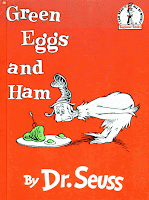
Under the privately funded Woman in Space program, 19 women are subjected to the same battery of tests as the Mercury 7 astronauts to see if they are fit for spaceflight. Over the course of the program (1960-61), 13 of the women -- the so-called Mercury 13 -- pass the first series of tests; Jerrie Cobb of Oklahoma (left), the first to be tested, is the only one to pass all three phases. (The program would be shelved, however, for a variety of reasons, for reasons ranging from qualifications to politics. The first woman in space would be the Soviet Union's Valentina Tereshkova in June 1963; it would be June 1983 before a American woman -- Sally Ride -- would go into space.)
* NASA summary: @
* Listen to NPR segment: @
* Watch History Channel documentary (5 parts): @
* Time magazine article on Cobb (August 29, 1960): @
* Life magazine article on Cobb (August 29, 1960): @
* "The 'Astronautrix' and the 'Magnificent Male' " (from the book "Impossible to Hold: Women and Culture in the 1960s"): @
* "The Mercury 13: The True Story of Thirteen Women and the Dream of Space Flight" (book): @
* "Right Stuff, Wrong Sex: America's First Women in Space Program" (book): @
* "Promised the Moon: The Untold Story of the First Women in the Space Race" (book): @
* "A Forgotten Moment in Physiology" (scientific paper): @






.jpg)













